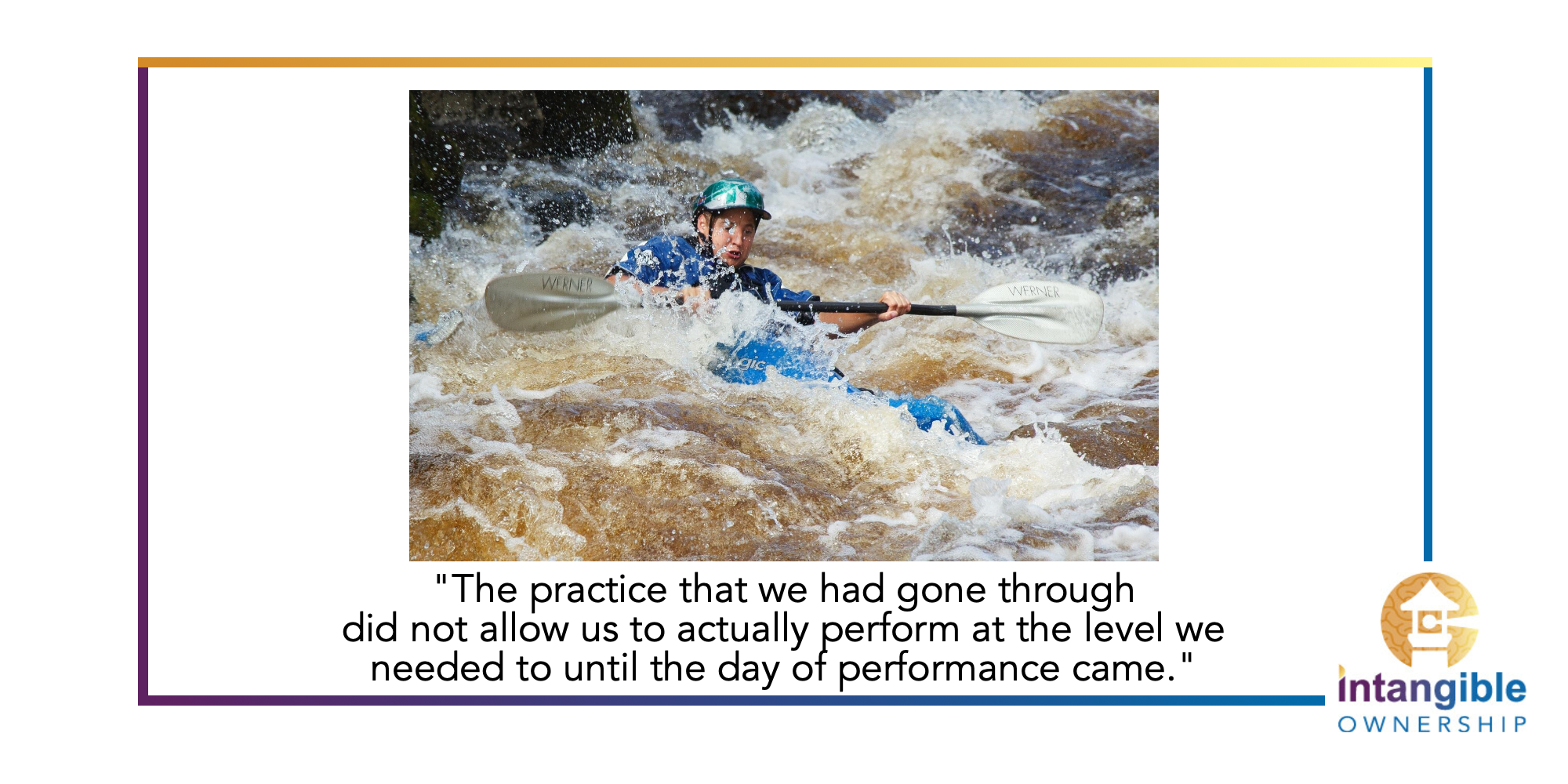
I was recently reminded of an experience I had when I was around 14 years old. My youth leader at the time suggested we all participate in a high adventure activity. That adventure: kayaking down the Snake River. At the time, none of us kids had ever been in a kayak. In fact, looking back at it none of us had ever even been river rafting much less directing a small kayak through rapids. In our excitement as teenagers, not thinking much about the future, we opted in wholeheartedly to the adventure ahead. Luckily for us, our leader was an experienced river guide and had spent many summers going down the Snake River in rafts and kayaks.
Our preparation first began in getting used to what a kayak was and what it was like to sit in one. We spent several evenings at the local high school swimming pool learning what it felt like to balance, to paddle, and get used to the feeling of a kayak. Our practice took many nights over many months. The time eventually came when we had enough experience in flat water to move on to a river. Our first river experience was on the Green River. The Green River is not exactly known for its heavy rapids or fast flowing waters. We thought we were ready for the Snake. Our first moving-water experience would tell us otherwise.
I can remember our first experience getting into the water on the Green River. The idea that we were going to be moving regardless of whether we put our paddles in the water was a little bit unnerving. That will be a whole other topic for another day. I can remember the first time we went through what we thought was a pretty crazy rapid in the Green River. We worked through the rapid, and perhaps the most terrifying part of that rapid, was that as we went through it our buddy with the most swimming experience tipped over in his kayak. He immediately pulled out of the kayak and began screaming and yelling for help and assistance to save him. We all thought we were witnessing the loss of our good friend. Our leader simply paddled over to him and pulled him and his kayak back to safety. As we rode out our intense moment, we all second guessed our ability to face the Snake River.
After many more hours in the local swimming pool and a second trip to the Green River, it was time to head to the Snake River near Jackson Hole, Wyoming. I can remember getting out of our vehicles and walking down to a vantage point where we could see rafters coming down the river through some of the rapids that we would be going through the next day. If you’ve never seen a river raft. Several of them can fit groups of 8, 10, and maybe 12 individuals based on the size. We caught sight of one group coming down the river and our leader told us to watch closely as we saw the size of the raft which was easily twice the size of our kayaks. The raft went over a rapid and quickly disappeared entirely. The raft was gone from sight! Suddenly it burst into view on the peak of the next wave. All of us gasp and many of us were a little bit sheepish to admit that it was terrifying to see a raft so much larger than our kayaks disappear completely in the rapids.
We went to bed that night relying on one important aspect of our adventure: we had prepared and we had practiced. We all realized that the next day would be the time to perform. Facing the rapids the next day I learned a profound lesson that is the point of this article today: you perform how you practice. Practice does not make perfect. Practice does make permanent. What happened inside of our experience down the river was the performance as a direct result of our practicing on slowly moving water or water that wasn’t moving at all. While flying down the river at 17,000 gallons per minute, I remembered the words of my leader in my head trying to guide me to use my paddle as I had practiced. I remember the words of my leader trying to remind me that if I were to tip over I had the ability and the experience to tip myself back over. I remember all of those words coming through to my mind and yet at the same time, I remember complete and utter terror. I remember being more scared perhaps at that time than I’ve ever been in my life since.
Then came the first wave. In an instant I dropped straight down and instead of coming back up the next wave, my kayak cut right into it. Everything went pitch black and silent. As I burst through the wave to the other side I realized some gold nuggets of truth: everything my body had done, all my actions, all my balance and paddling happened just like I was on still water again. I was performing how I had practiced. Each time we went down the river over the next several days we honed our skills and got better. We would never had known we were capable of the that level of performance until we actually accomplished that level of performance.
Let’s bring the river into full circle here with a couple of questions for you as a leader.
How are you developing your teams?
What are you allowing your team members to do to prepare for their performance in the company?
In what ways are you putting them in situations where they can fully practice the skills and talents that are needed to excel in their positions?
How can you allow your team members to practice in still water?
In what ways can you train your team members in slow moving water before throwing them into the rapids?
There are times as business leaders where we expect people to dive straight into the rapids of business knowing full well that it might put them in danger or possibly put their success on the brink of disaster. The questions above have created a space for us to consider how we prepare and practice with our people. When we allow our people to prepare and practice in slower scenarios, in calmer waters, we are actually allowing the process of that practice to become permanent in their minds. Then, in the rushing waters of the business our team members may actually have the skills and talents developed to adapt to those situations, rather than be forced to develop the skills and talents in the moment. When the opportunity to perform presents itself, the time for preparation has passed.
That today is my challenge to you as a business leader. Consider the preparation. Consider the practice needed to bring out the highest level of performance in everyone that you bring onto your team. If you find yourself needing some help in the arena of preparing your team, helping your team practice, or increasing performance amongst your team members, please reach out to me get on my calendar, and let’s have a conversation about how we can help the performance of your team going forward. I know that you will find greater success if you allow the preparation and practice to occur in the still water and calm waters of life before throwing your people into the rapids of every business situation.
Remember always that one step up makes all the difference.



